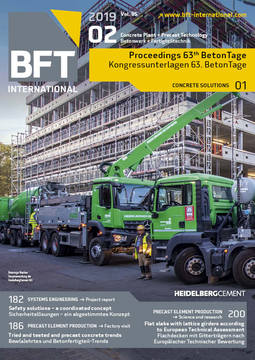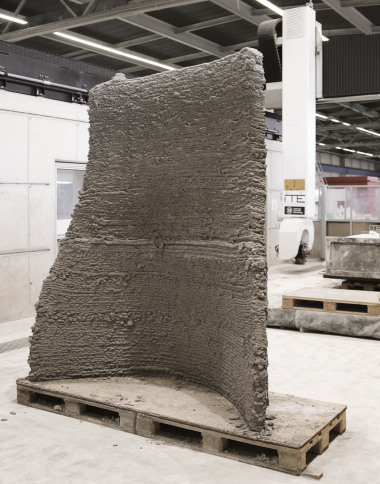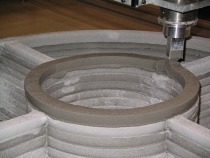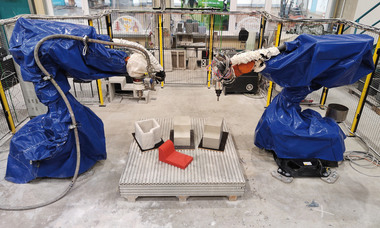Architectural design freedom lies in the detail
Compared to other methods, additive manufacturing processes are associated with a large number of benefits that become particularly apparent when producing free-form elements. 3D powder printing enables the manufacture of slender, custom-made structures with optimized topology without requiring additional auxiliary or support systems. Manufacturing such structures would not be possible with conventional formwork and contour crafting, i.e. one of the other common 3D printing methods, when it comes to overhangs or cavities.
Comprehensive research was conducted at the Institute of Construction Materials at Kaiserslautern University of Technology to develop a cement-bound material adjusted for the 3D powder printing of concrete. This project was funded by the Federal Ministry for Economic Affairs and Energy as part of the Zentrales Innovationsprogramm Mittelstand (ZIM) managed by AiF Projekt GmbH.
In the first step, dry compounds (dry mortars) were developed and optimized in respect of their workability and strength parameters. These materials were then used to manufacture free-form objects in order to demonstrate the performance achievable by this innovative manufacturing technique. Continuous improvement of the compound and reaction liquid made it possible to reach realistic strength levels. Furthermore, a micrometer-range particle distribution enables highly accurate, detailed representation of the demonstrators, which would not be possible if one of the common extrusion processes were applied. This paper will report on general process engineering aspects as well as on the experience gained within the research project.








